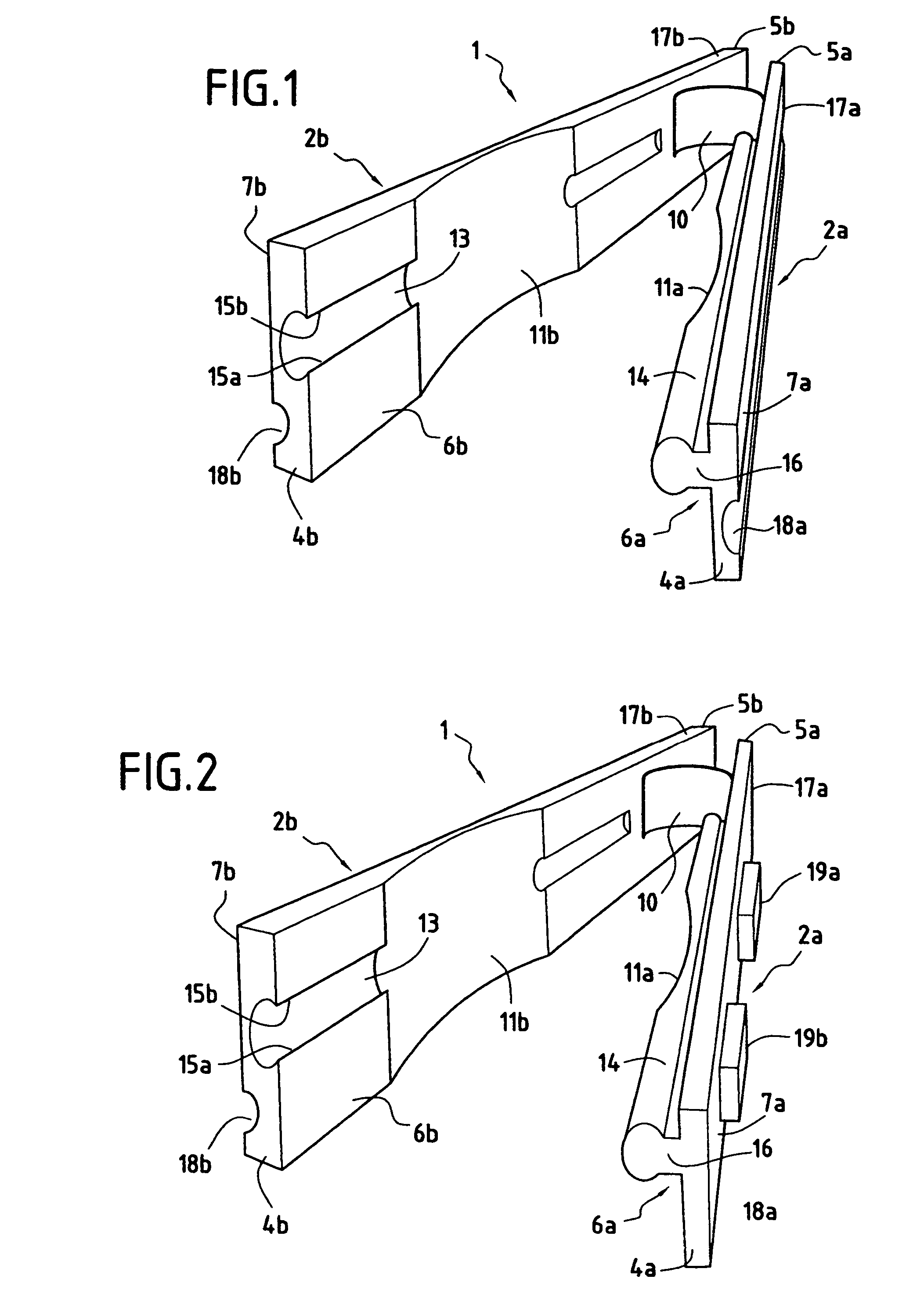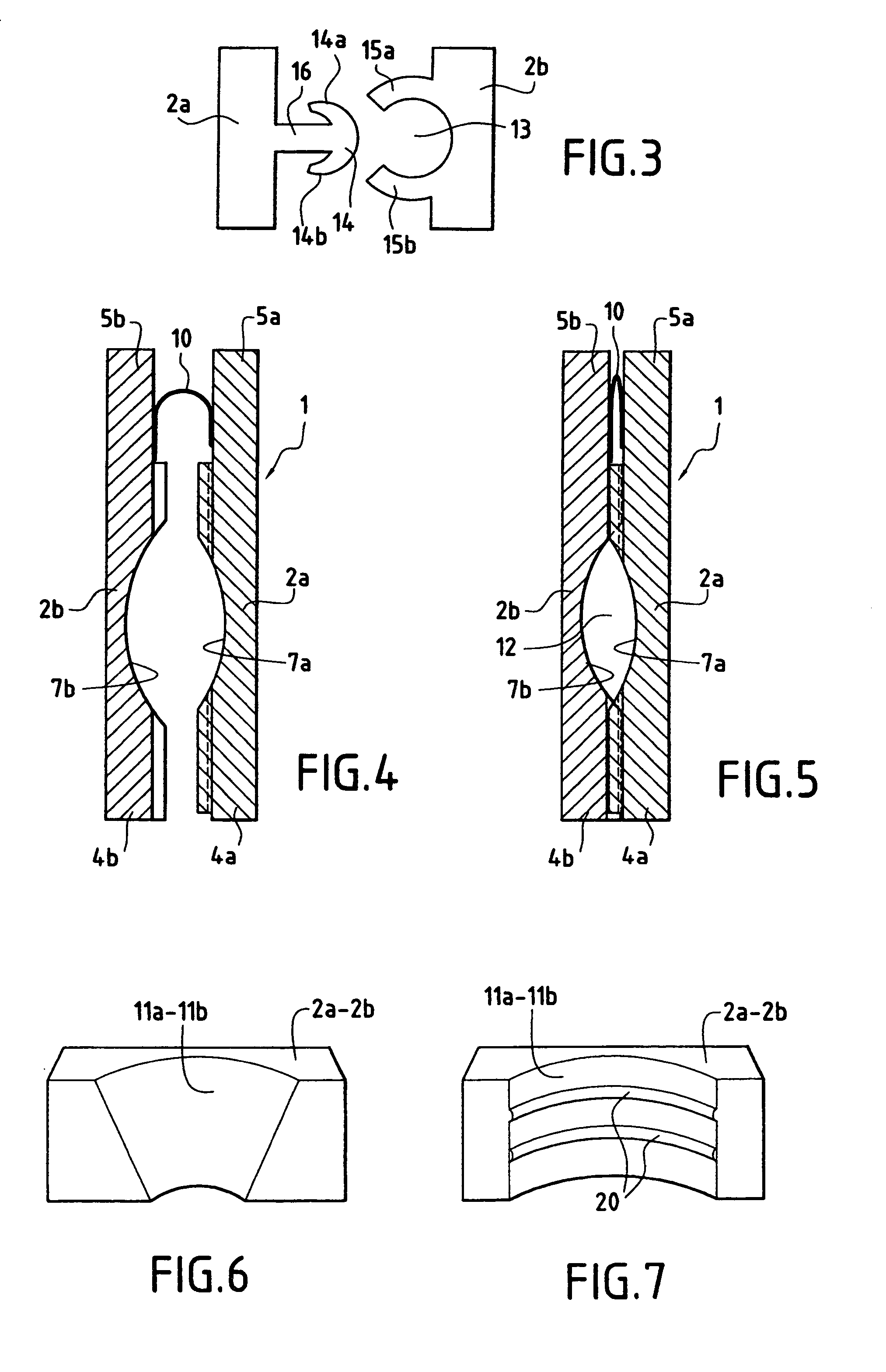Device for ligating an anatomical structure
a technology of anatomical structure and ligation device, which is applied in the direction of staples, nails, medical science, etc., can solve the problems of inability to use the fingers or the hands, requiring complex equipment, and sometimes of inappropriate size,
- Summary
- Abstract
- Description
- Claims
- Application Information
AI Technical Summary
Benefits of technology
Problems solved by technology
Method used
Image
Examples
second embodiment
[0107]FIG. 18 shows a ligature element 61 which has a first branch 62a that is semi-rigid and a second branch 62b that is also semi-rigid, each branch having a proximal end 64a, 64b, a distal end 65a, 65b, an inside face 66a, 66b and an outside face 67a, 67b. A flexible thin strip 70 interconnects the distal ends 65a, 65b of the two branches 62a and 62b. Said ligature element 61 is also preferably made by molding a suitable material, complying with medical requirements, in one piece or in a plurality of assemblable pieces.
[0108]On its inside face 66a, and in the immediate vicinity of its proximal end 64a, the first branch 62a has a keeper 71 of substantially rectangular cross-section, having a wall 72 remote from the inside face 66a.
[0109]On the outside face 67b of its proximal end, the second branch 62b has a plurality of transverse serrations 73. The cross-section of the duct 74 through the keeper 72 is determined such that the proximal portion of the second branch, inserted via ...
third embodiment
[0127]FIGS. 23 and 24 show a ligature element 101 which is in the form of a flexible, relatively long, strip whose proximal end 102 has a keeper 103 on its top or inside face, and whose end of its distal portion 104 has a barb 105 on its top or inside face. The barb 105 serves to be inserted by traction into the keeper 103 via the distal end 106 thereof. By continuing to pull on the barb 105, the distal end 104 is caused to penetrate into and to slide in the keeper 103, and the portion of the strip adjacent to the keeper 103 forms a loop for tightening around the anatomical element to be ligated, it then being possible for the distal portion 104 then to be cut off in front of the proximal end 107 of the keeper 103. The bottom face of the ligature element 101 can, in its middle portion, have serrations that enable it to be locked in the keeper 103 after tightening.
[0128]FIGS. 25 to 30 show the applicator 120 used for putting in place the ligature element 101 around an anatomical elem...
PUM
 Login to View More
Login to View More Abstract
Description
Claims
Application Information
 Login to View More
Login to View More - R&D
- Intellectual Property
- Life Sciences
- Materials
- Tech Scout
- Unparalleled Data Quality
- Higher Quality Content
- 60% Fewer Hallucinations
Browse by: Latest US Patents, China's latest patents, Technical Efficacy Thesaurus, Application Domain, Technology Topic, Popular Technical Reports.
© 2025 PatSnap. All rights reserved.Legal|Privacy policy|Modern Slavery Act Transparency Statement|Sitemap|About US| Contact US: help@patsnap.com



